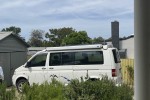Public transport in Australia
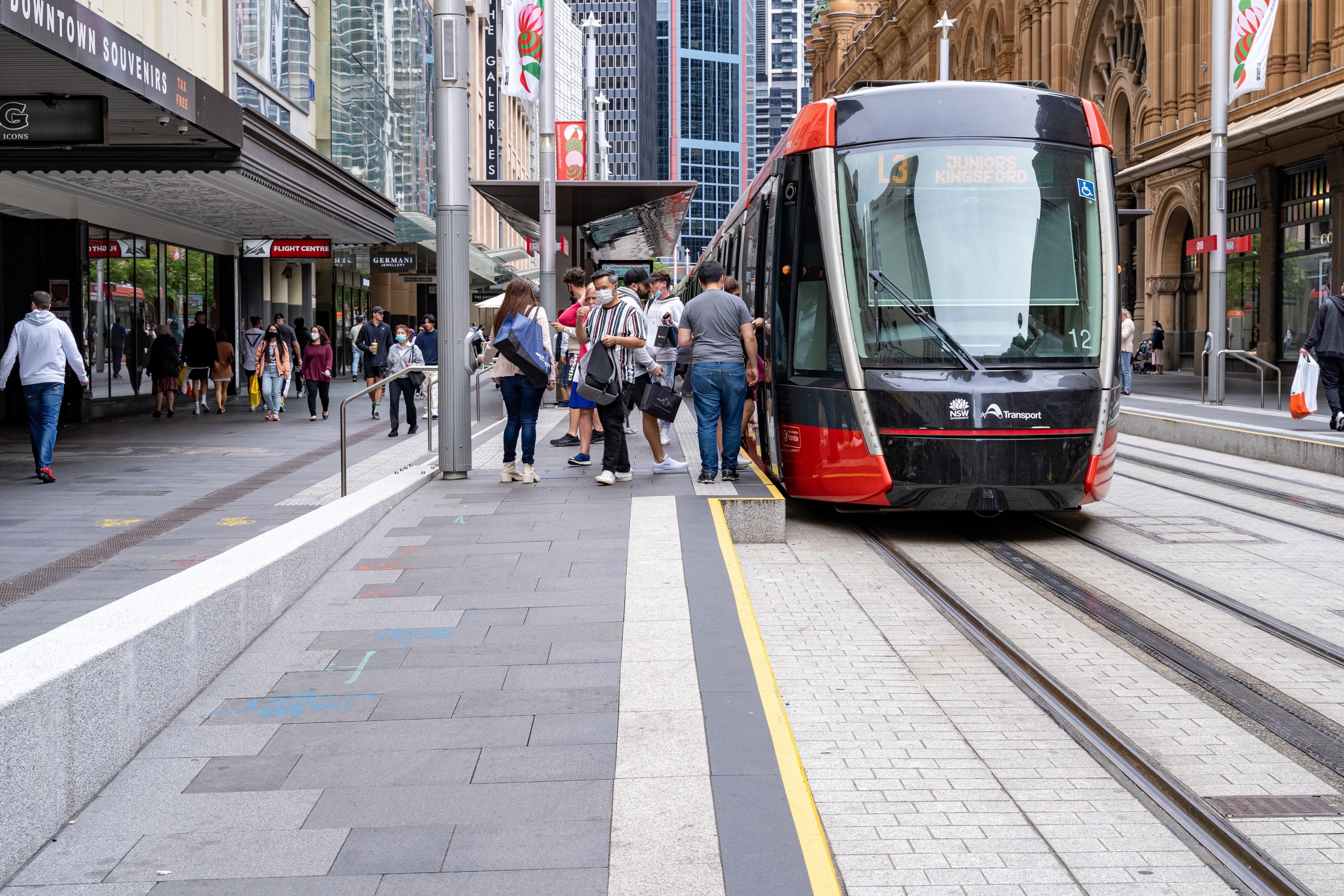
Australia is a big and diverse the country, covering a total area of 7,741,220 sq km, there’s no doubt there’s a lot to see and explore.
The question is: what’s the best way to get around?
Luckily Australia is equipped with a robust public transport system. Depending on where you are in the country you’ll have access to a range of buses, trains, trams, ferries, flights and more.
In this article we’re sharing the best public transport options broken down by every major capital city as well as your interstate travel options.
Whether you’re planning a trip across the nation or simply exploring the best ways to get from A to B, we’re covering it all below.
Public transport in Sydney
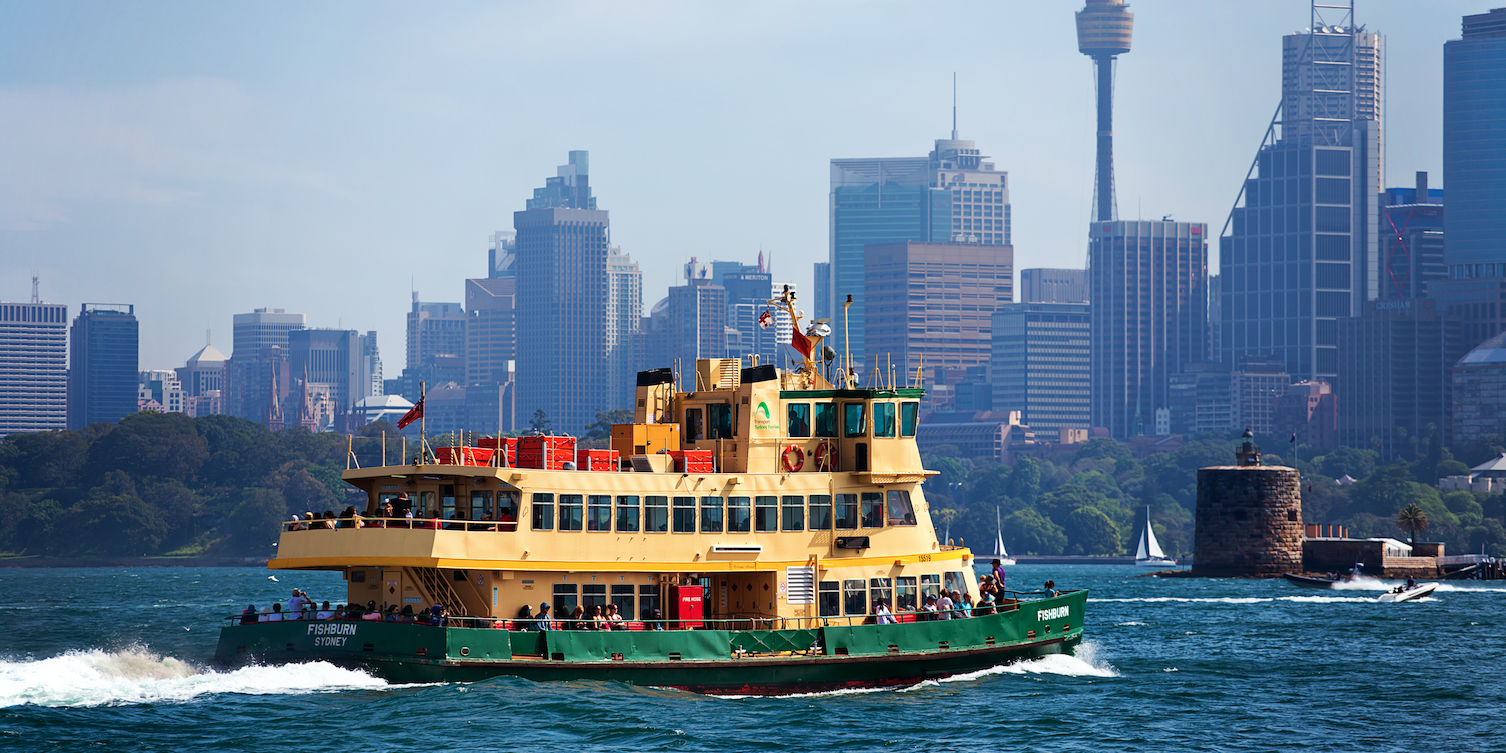
Sydney is a highly connected city that makes for easy and affordable public transport. In fact, in a recent international study Sydney was ranked as having the best transportation in Australia.
It’s no surprise the city is so highly rated with light rail, buses and ferry services that run at regular intervals each and every day.
Catching a bus in Sydney
Sydney’s buses are responsible for more than 220 million trips a year across the city. The city’s bus network is made up of over 600 bus routes with almost 4,000 buses in operation and an additional 1,000 buses that service the Greater Sydney Area including Newcastle, Wollongong and the Blue Mountains.
Find a full list of bus routes and operator maps here.
Train services Sydney
The Sydney Train Network covers the Sydney metropolitan area, northern suburbs through to Berowra, Bondi Junction to the east, Waterfall to the south, Macarthur and Leppington to the south west, and Emu Plains and Richmond to the west. Many of the metropolitan lines commence their service at 4am and run until 11pm.
The heart of Sydney’s train network is Central Station. Every train runs through this station including services to the airport, Blue Mountains, Central Coast and even up to Queensland.
Find a full rundown on routes and timetables here.
Ferry services Sydney
There are eight public ferry routes in Sydney stretching across the harbour through to Balmain, Parramatta, Mosman, Rose Bay and more.
While the ferries offer a quick and accessible travel option, it’s important to note that there are some ferry services that are replaced by buses at full tide. Check out the Trip Planner for an updated monthly schedule.
Paying for your travel in Sydney
Travelling throughout the Sydney area is made easy for locals and visitors alike with a contactless payment system. If you have a debit or credit card or a linked device, you can use it to pay for your travel as you go aka the tap on / tap off system.
For those who don’t own a suitable card or device, Opal Cards are also readily available. These cards allow you to top up the balance when needed and simply tap on / and off at the designated points at each bus or train station or ferry terminal.
Travel costs / fares
The cheapest time to travel throughout Sydney is outside of peak times. When travelling off-peak you can save up to 30% on your fare on metro / train, bus and light rail services. Lower fares also apply on Fridays, weekends and public holidays.
Daily and weekly caps
The tap on / tap off system has both daily and weekly caps attached so you can maximise your travel and minimise the cost.
This means you can travel as much as you wish via metro, train, bus, and ferry services within the Opal network.
Public transport in Melbourne
The city of Melbourne is connected by a network of trains, buses and their unique tram service.
One of the best things about Melbourne’s tram system is that it is absolutely free to travel within the city centre.
This provides a cost-free travel option for tourists and locals alike. The service connects to many of the city’s tourist sights and attractions and the specially marked Burgundy and Gold City Circle services also offer audio commentary as you pass key points of interest along your route.
The free tram zone is clearly marked, outside of this area a Myki card is required to pay for your travel.
Tram destinations include
And more.
Find a full network map here.
Train services in Melbourne
Metro trains run throughout Melbourne’s CBD and outer suburbs. Part of the network includes an underground city loop that stops at the key central business districts including: Flinders Street, Melbourne Central, Parliament, Southern Cross and Flagstaff stations.
Find all the details on lines and stations at Metro Trains.
Travel by bus in Melbourne
There are roughly 400 regular bus routes servicing metropolitan Melbourne.
The bus network covers key locations including:
Typically the bus routes intersect with the city’s tram or train lines to enable easy trip planning.
Visit Public Transport Victoria to plan your trip.
Paying for your travel in Melbourne
Melbourne’s ticketing system is a top-up card known as myki. You can pick up a myki card at certain train stations, online or anywhere that displays the myki sign.
The simple system allows you to top-up your card as you go and tap-on or off at designated bus, train, or tram stations.
Public transport in Brisbane
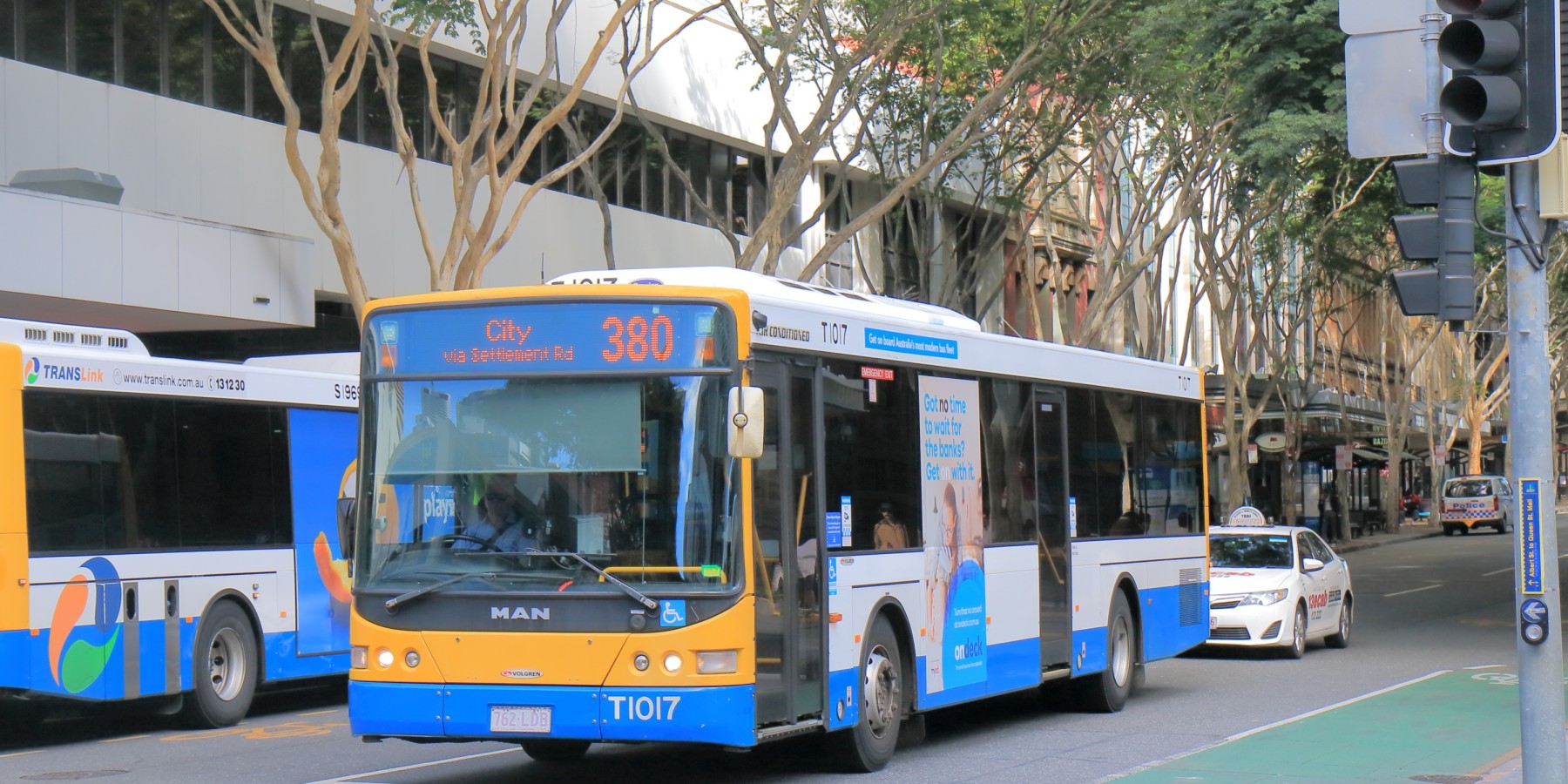
Brisbane has an extensive public transport system that includes buses, trains and ferries. While you can buy tickets at most stations, the cheapest and easiest way to pay for your travel is with a go-card.
Trains in Brisbane
Major stations on Brisbane’s train network include Central, Roma Street, South Bank and Fortitude Valley. The train network also offers connections to outer suburbs as well as through to the Sunshine Coast and Gold Coast.
Find all the details on different routes and stations in Brisbane here.
Catching a bus in Brisbane
Brisbane offers a free City Loop and Spring Hill loop service that run in both directions every 10 minutes 7am - 6pm. This makes for a cheap and accessible option for tourists exploring everything the city has to offer.
With dedicated busways, bus travel is typically quite efficient - making it ideal for commuters on their way to or from work.
Ferry services around Brisbane
Thanks to the Brisbane River, the city has yet another way for you to get around: the Cross River and City Hopper ferries.
The Cross River ferry service connects Holman Street at Kangaroo Point, Bulimba to Teneriffe and Riverside and local dining and entertainment hub.
Brisbane City Council's CityHopper is a free inner-city ferry service that runs between North Quay and Sydney Street, New Farm. The service runs every 30 minutes between 5.30am and midnight, Sunday to Thursday, with services operating later Friday and Saturday nights.
Paying for your travel in Brisbane
go card is Brisbane’s travel e-ticket and can be used on all Translink bus, train (including Airtrain), ferry and tram services in greater Brisbane, Ipswich, Moreton Bay, Redlands, Sunshine Coast, and Gold Coast regions.
While it is still possible to buy paper tickets, go card is the cheaper option.
Public transport in Perth

Perth’s key attractions and business hubs are well connected by buses, trains and ferries. The Transperth network is interconnected, meaning you can use tickets or your SmartRider card across any of the services. A free transit zone (FTZ) also exists within the CBD allowing you to travel at no cost.
Train travel in Perth
The three major train stations in Perth’s CBD are Perth Station, Perth Underground and Elizabeth Quay. Each of these stations is within the FTZ meaning you can hop on or off at no cost using your SmartRider card. City West, Mclver and Claisebrook stations offer connections to other parts of the city and neighbouring suburbs.
Head to the Transperth website to plan your trip and check out routes and timetables.
Bus services in Perth
Most city bus services in Perth terminate at either Wellington Street or Esplanade bus stations. Each location offers easy access (within walking distance) to local business districts, shops and dining.
Use the Transperth JourneyPlanner to map your route.
Catching a ferry in Perth
The Swan River is a popular attraction for locals and visitors to Perth. It’s also the route for Perth’s Ferry service.
The South Perth service leaves every 10 minutes from Elizabeth Quay ferry terminal. It’s one of the easiest ways of getting to Perth zoo and offers some great views of the city skyline.
If you’re headed to the Optus Stadium you can catch a ferry to the game from Barracks St Jetty or South Perth via Captain Cook Cruises. Or The Little Ferry Co. departs from Elizabeth Quay but only holds up to 12 guests.
As both of these services are run by private operators, it’s best to get in touch with them directly for timetables and bookings.
Paying for travel in Perth - Smartrider
SmartRiders are reusable smart cards that allow easy payment for travel on Transperth services. They are the cheapest and most convenient way to travel, giving you a 10% discount off the cash fare. Pick up your SmartRider at Transperth InfoCentre or Retail Sales Outlets in Perth.
Cash tickets – can be bought from machines at train stations and ferry jetties, and direct from bus drivers.
Public transport in Adelaide

Adelaide is known by many as the ‘20 minute city’. This is because almost everything in the city is within a 20 minute car ride. With a selection of trains, trams and buses to choose from, you can easily leave the car at home and get around via public transport.
Trains in Adelaide
Trains tend to be the most efficient form of transport in Adelaide. There are six key route systems servicing the north, south and west of the city and outer suburbs, with Adelaide Railway Station acting as the central terminus of the network.
Explore the full service area via Adelaide Metro’s route maps.
Tram services in Adelaide
Trams are an ideal way to travel within Adelaide’s inner city. It’s free to travel between the Entertainment Centre, Botanic Gardens South Terrace and Festival Plaza.
Adelaide Public Buses
Adelaide’s bus system is considered the most comprehensive and frequent form of transport in and around the city. Servicing The CBD through to Adelaide Hills and outer suburbs, buses run along 55 Bus routes with over 1,000 designated bus stops.
Paying for travel in Adelaide - metroCARD
Paper tickets are being phased out in Adelaide so the best ways to pay for your travel is via a metroCARD, Adelaide Metro tap and pay ticket using your credit/debit card or smart device, or via Adelaide Metro Buy & Go app.
Any of these pay-as-you-go systems allow you to travel across the entire network of buses, trains and trams.
Travelling interstate
Now that we’ve covered public transport in Australia’s biggest cities, let’s explore your options for interstate travel.
Domestic Flights

Flying is by far the quickest way to travel across Australia. Domestic airlines offer an easy, accessible and relatively low-budget option for visiting all parts of the country.
Airlines include:
Coach services
Long-distance coach services provide a travel option for those who wish to make multiple stops or who are on a tighter budget.
Greyhound Australia is currently the only national coach network in Australia with more than 180 stops across the country. It services all mainland states and territories.
Premier Transport offers interstate coach services between Brisbane and Sydney.
There are also smaller, regional services that operate in different States and Territories.
Campervan and car relocations
A more creative option for interstate travel is campervan or car relocations; if you're not familiar with this concept, it's when car rental companies need to move their vehicles from one city to another to get them ready for a booking. This often occurs on popular tourist driving routes, such as Sydney to Bryon Bay. For expats or tourists planning longer road trips, often purchasing a campervan or car and utilising interstate car transport service is the most cost-effective option due to hire companies charging by the day or week.
What do our customers say?

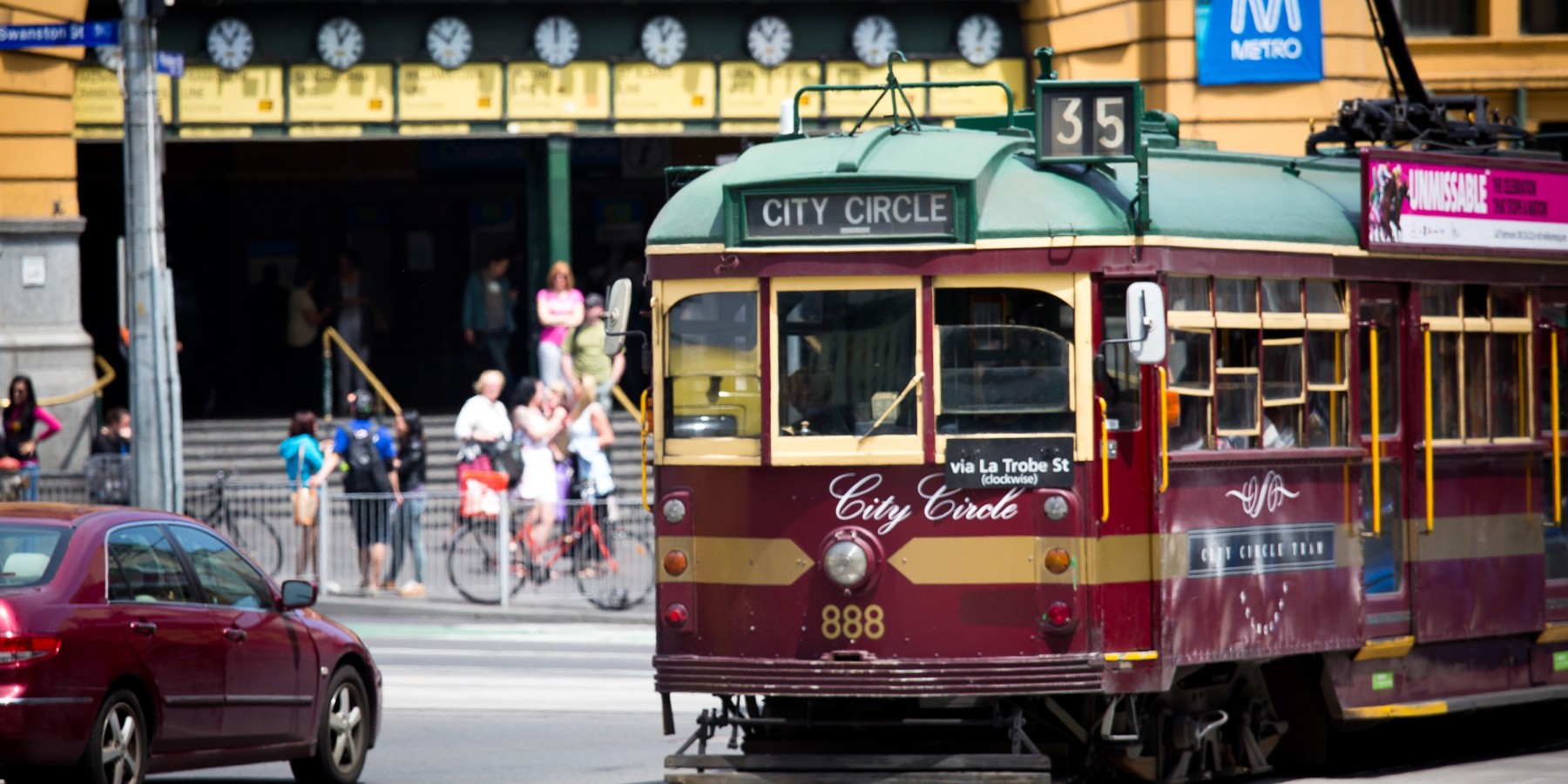
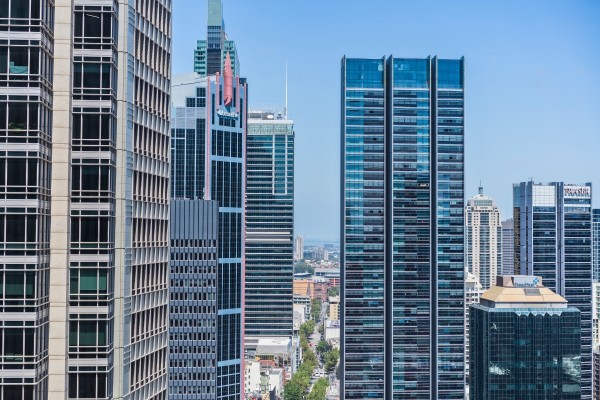




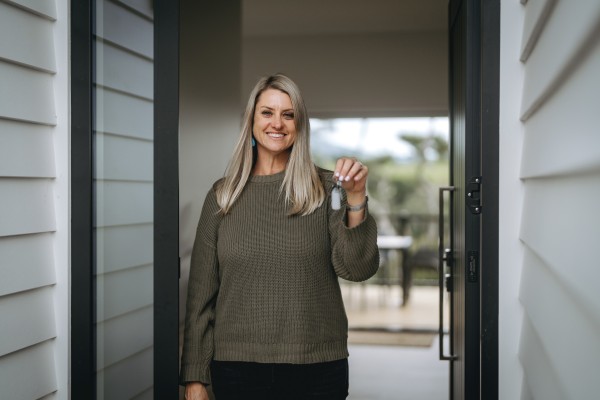
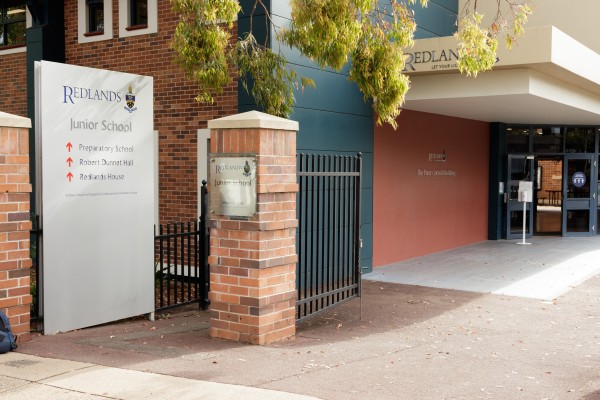
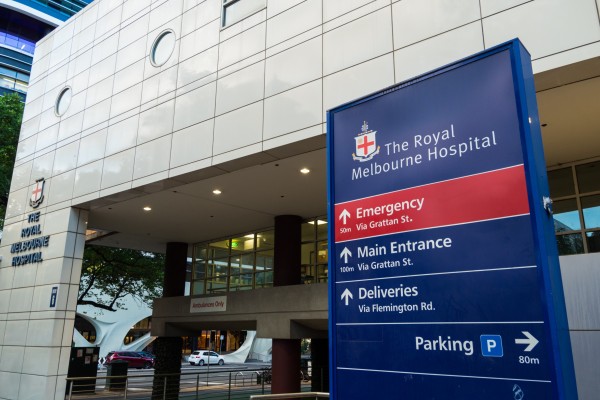
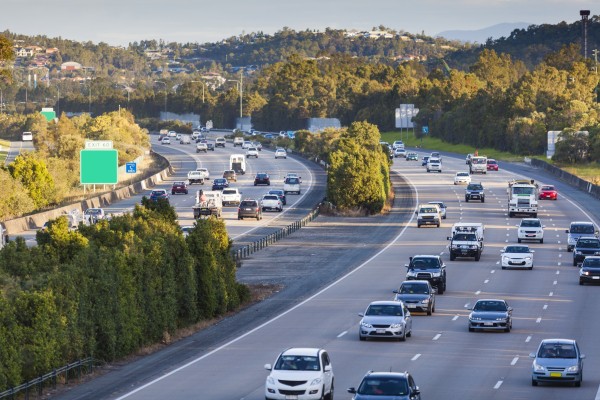
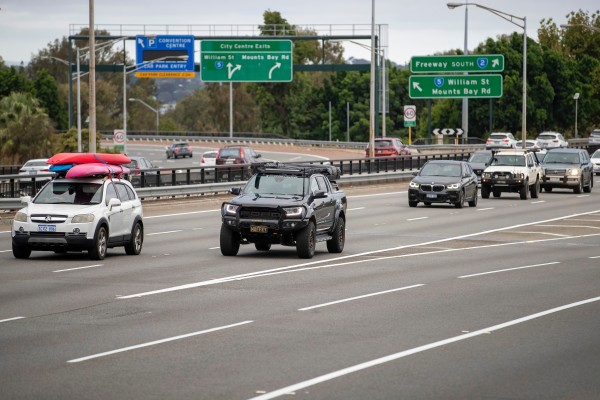
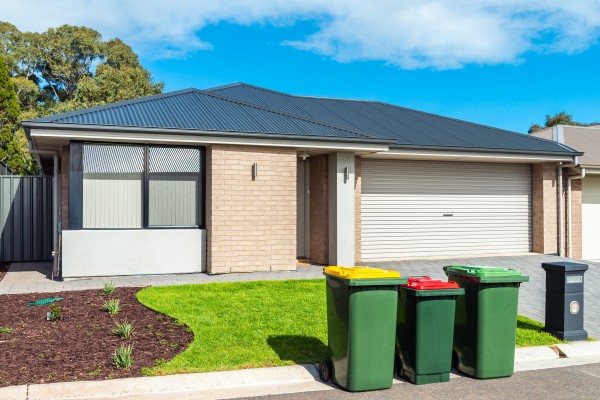



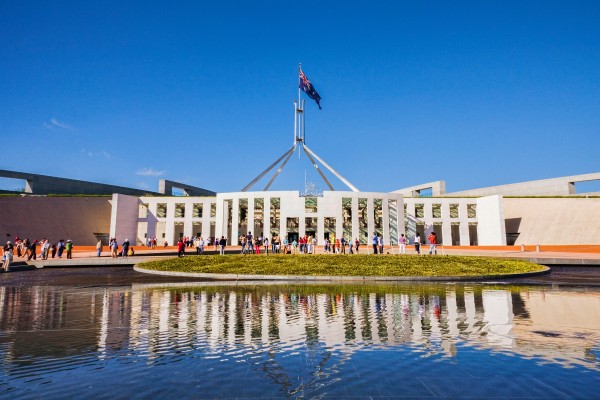




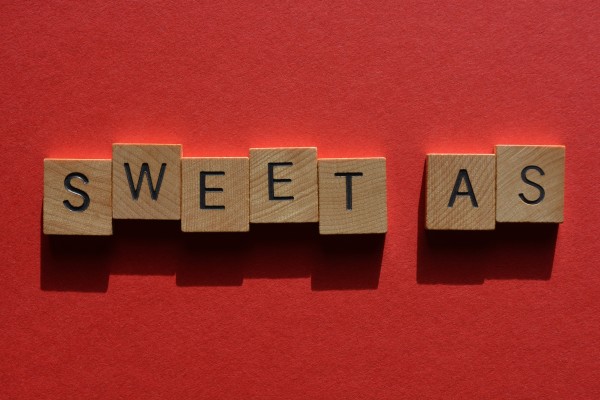
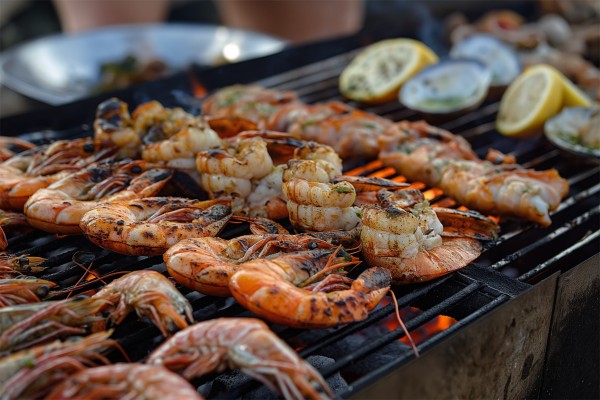
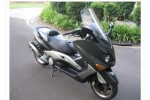

![Electric Bass Guitar Amplifier [90x70x35cm ; 50kgs], Electric Bass Gui... Electric Bass Guitar Amplifier [90x70x35cm ; 50kgs], Electric Bass Gui...](https://cdn.upmove.com.au/image/listing/3526991a6bdc56e645ac1b2a540b126e.jpeg)
